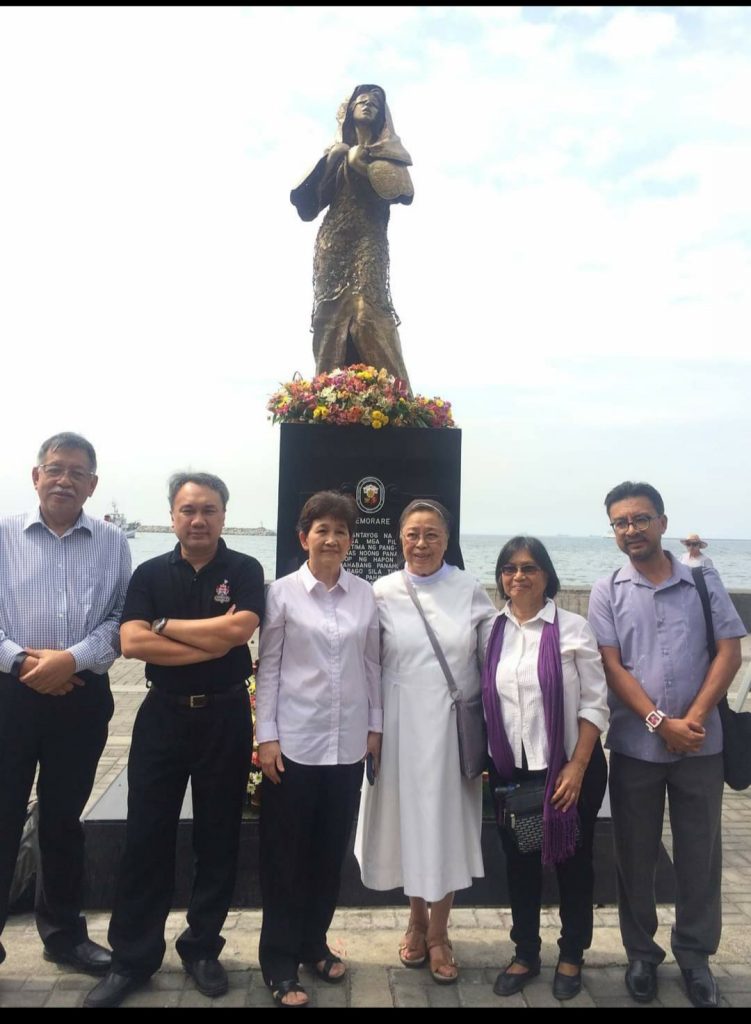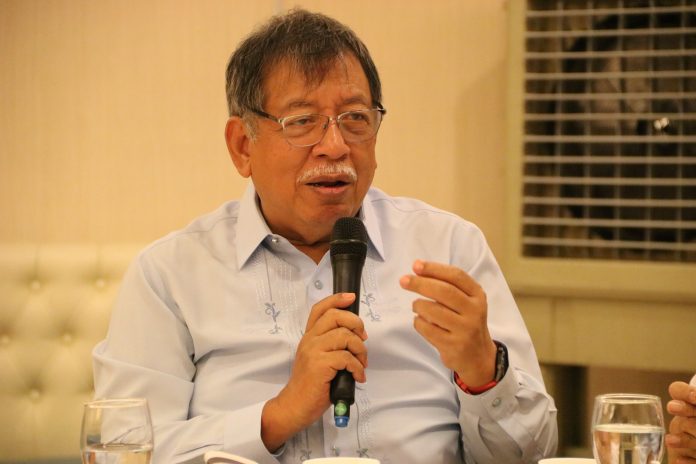The death of veteran journalist Melo Acuña coincided with the anniversary of the disappearance of the “Lola” comfort woman statue in Manila two years ago. It was an issue close to Melo’s heart.
“It’s sad wife and I got to be part of 12,067 new cases,” read a message posted by Melo on his Facebook wall on August 24, 2021.
A day later, he asked for prayers. Sadly, Melo passed away three days later on August 27 at 2:30 a.m. at the age of 64.
Some friends captured Melo’s character in their online posts of love and respect to an iconic figure recognized for his long and distinguished media career.
Melo touched so many lives with his generous heart, sparking so many great conversations with his soothing voice, and endearing humility. He was an inimitable pillar of civil, passionate, and enlightening dialogues.
Born in Alabat, Quezon, on Feb. 8, 1957, Melo was known as a big man with a booming voice. He was always prepared to help colleagues, from connecting sources to sharing his playlists of golden memories on radio.
His passing “left a void in the press field” as he was a “great loss to the Fourth Estate.”
Melo was one of the instrumental persons behind “Flowers-for-Lolas,” an alliance supporting the campaign on the issue of comfort women and other victims of sexual violence and slavery during World War II.
He organized several media events for the two-meter high “Lola” statue, an unnamed woman wearing a traditional Filipino dress, blindfolded, with hands clutched to her chest, installed along Roxas Boulevard.
The statue stands as “a reminder that wars of aggression must always be opposed, and that sexual slavery and violence should never happen again to any woman, anywhere at any time.”
Even if it is a reminder of a painful past, the “Lola” statue honors the memory, courage and resilience of Filipino women.
Four months after its installation on December 2017, Melo monitored through his facebook the events that led to the dismantling of the statue under cover of darkness. On April 27, 2018, workers removed the statue reportedly to give way to a drainage improvement project.
Issues of historical revisionism and the government’s submission to Japanese policy were raised by concerned groups led by the Flowers-for-Lolas. President Rodrigo Duterte earlier remarked that the government does not want to “antagonize” other countries.

Tulay Foundation commissioned an artist to make the necessary repair of the statue until it was supposed to be installed at the Redemptorist Church in Baclaran.
The artist who was supposed to repair the statue, however, said that it was taken by unidentified men. A media conference about the “Lola” statue was my last encounter with Melo.
Despite the lockdown, Melo continued hosting the “Tapatan sa Aristocrat” and the “Wednesday Roundtable at Lido” media forums through online platforms.
I told him that I was his “dakilang kaladkarin” as the impromptu resource person on several issues like seafarers, comfort women, activism, politics, Visiting Forces Agreement, environment, among others.
He would usually call me the night before his event to invite me to be present, although my name was already included in his poster.
Melo also often asked my help when he needs to form a panel for maritime issues especially those affecting seafarers and during the annual National Seafarers Day.
One of his recent online media forum on the Visiting Forces Agreement with the United States touched upon the bases agreement.
I gave a historical perspective on the VFA by narrating my experience with the campaign during the 1990s against the renewal of the US military bases treaty.
As the photographer of the Philippine Collegian, I covered several mass actions involving UP students, including the historic Lakbayan on March 1991, a three-day 96-kilometer march from the UP Diliman campus to the Clark Airbase in Pampanga.
I was even one of his guests on August 16, 2021, in Tapatan sa Aristocrat on the proposed Department of Overseas Filipinos.
A week later, he was gone.
Atty. Dennis R. Gorecho heads the seafarers’ division of the Sapalo Velez Bundang Bulilan law offices. For comments, email [email protected], or call 09175025808 or 09088665786).









